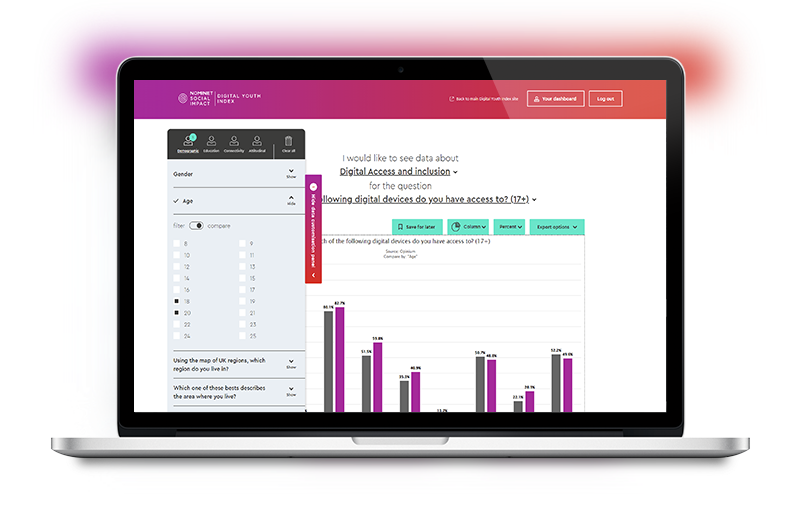Broken promise
One of the early promises of the web was that it would democratise knowledge and break open opportunities. Whether you were in Mumbai or Manchester and whatever your background you would have access to the same resources, be able to make the same connections and follow your own path. However, with 1 in 5 young people not having suitable access or devices for learning, that promise is not being kept. In fact, for those young people digital has become counterproductive, by removing the universal access to education that has been a key tenet of tackling disadvantage for so long.
Power relationships
Often the focus on digital inequality falls on access but, as this research highlights, the quality of access is just as important. Providing devices may be a good first step but for those in need, having to rely on sub-standard devices not only locks them out of many opportunities but also acts to reinforce the power inequalities many people face. Consider the young person joining an online group tutorial on a mobile device with low-resolution image and sound and intermittent connection. How does their experience compare to those with the best available? – how will this influence how they express themselves or seek help? How will others perceive them and how does that perception and the accompanying bias affect their confidence and sense of belonging? Having access is one thing, being able to take part is something much more complex.
Cost
Digital inequality costs. It costs individuals, families and communities and the costs often fall disproportionately on those already experiencing disadvantage or vulnerability. The economic, productivity and opportunity costs of digital inequality are quite well documented – Parent Zone’s research highlighted that during lockdown families from more vulnerable social-economic backgrounds spent a larger proportion of their income ensuring children had some form of access to learning.
Financial and time costs take their toll however, perhaps less often considered, are the behavioural and relationship costs. Limited access, skills and support mean that children’s options for seeking help are reduced whilst at the same time they may be pushed into riskier behaviours or spaces in search of equitable access or experience. Add into this parents and carers who also lack access to appropriate help themselves and the negative impact on children’s safety and wellbeing is likely to increase further.
Resilient Families
In today’s connected world digital exclusion, restriction or friction impacts all aspects of family life. Parents understand the value of digital for their children and they already go to great lengths to provide access, opportunity and support in the best ways they can. Families are remarkably resilient to shock and change. However, under sustained pressure from multiple angles, any family will struggle to flourish and relationships will strain as a result.
Inclusion is contextual
The discourse around digital skills and opportunities can often slip into purely focusing on high levels of disadvantage and vulnerability – an assumption about ‘a certain kind of family’ that is affected. However, the pandemic was a stark reminder that our resilience and inclusion is always contextual. Families who may have felt quite digitally capable and comfortable suddenly found themselves in a precarious position. They suddenly had to share devices, face increased demands for connection and respond to new challenges that stretched their capability and confidence. Similarly, as new technologies, behaviours, risks and opportunities emerge, families must constantly evolve and adapt – even in the best circumstances this adoption always results in a period of lag when families may feel excluded, precarious or vulnerable.
Within this mix, it is also worth remembering the impact that regulation and policy may have – as the digital environment responds to new regulation young people may find themselves newly excluded or face additional challenges if they need parental permission for accessing help or their community. How young people, families, platforms and regulators adapt to this changing context will be something to consider closely.
It’s complicated
As others, much smarter than I have repeatedly highlighted, understanding children and families’ relationship to digital is complicated. The Nominet Digital Youth Index is a welcome addition to help us understand that challenge. As the index evolves it will become an even more valuable tool. It will help us to scan for emerging trends, risks and opportunities and, hopefully, enable us to finally get ahead of the curve in supporting young people in the connected world. What our response to that insight is in practice will be our collective challenge – but whatever form it takes, it must include the views and active participation of young people – and the whole family.
Share this article







